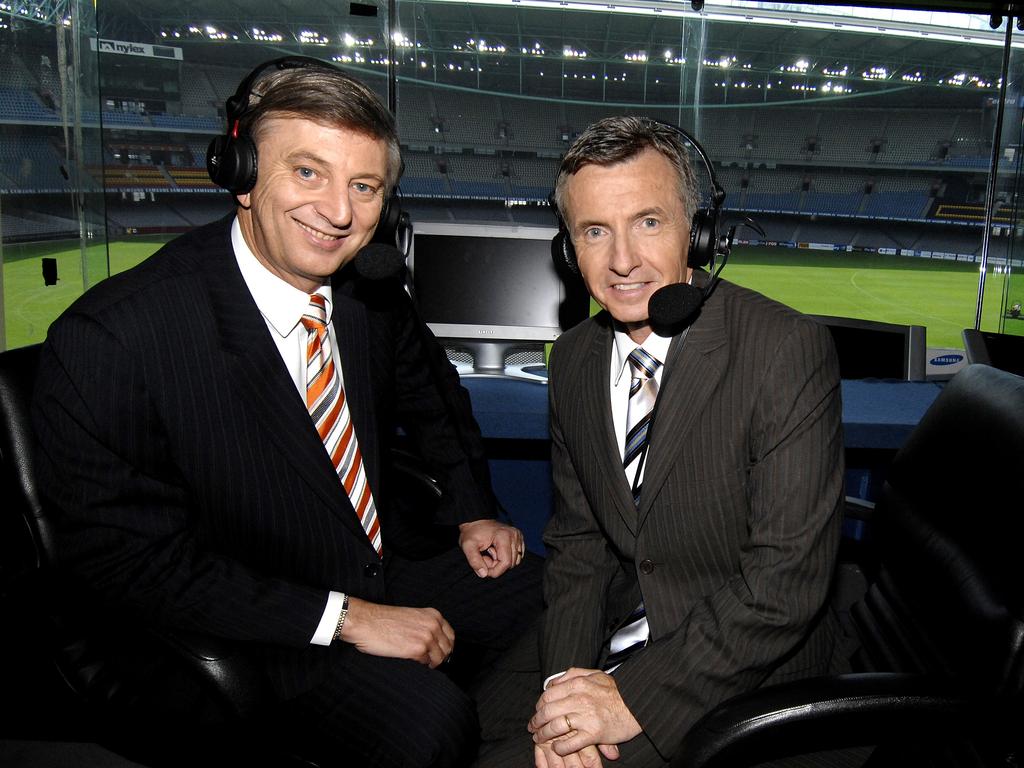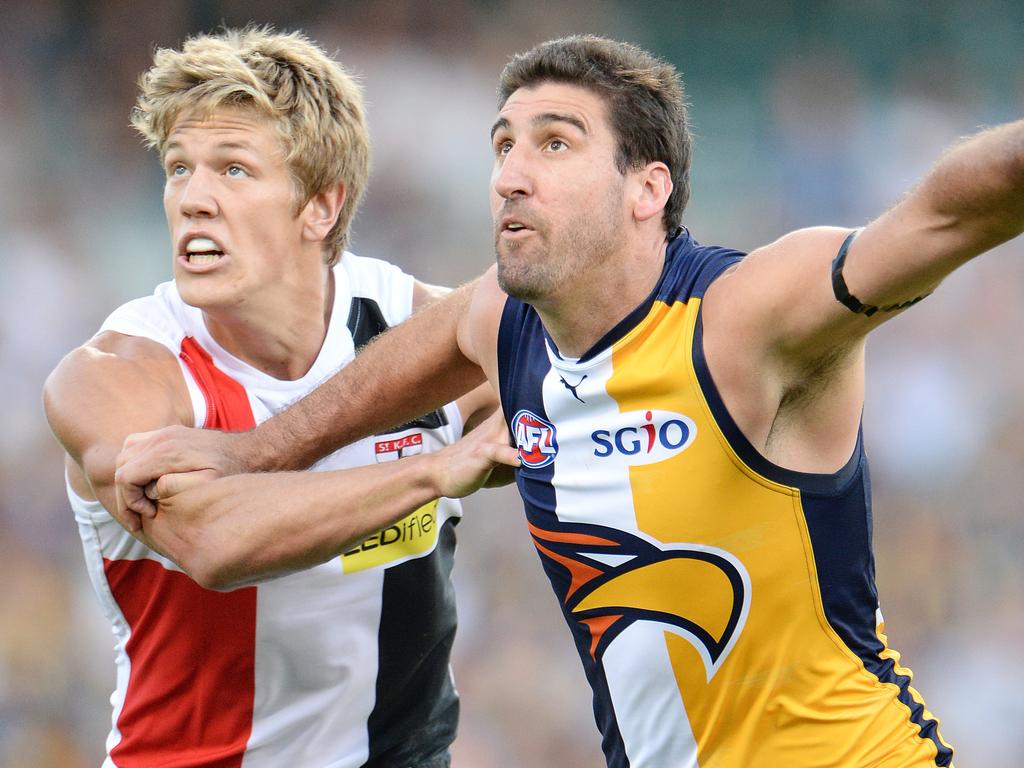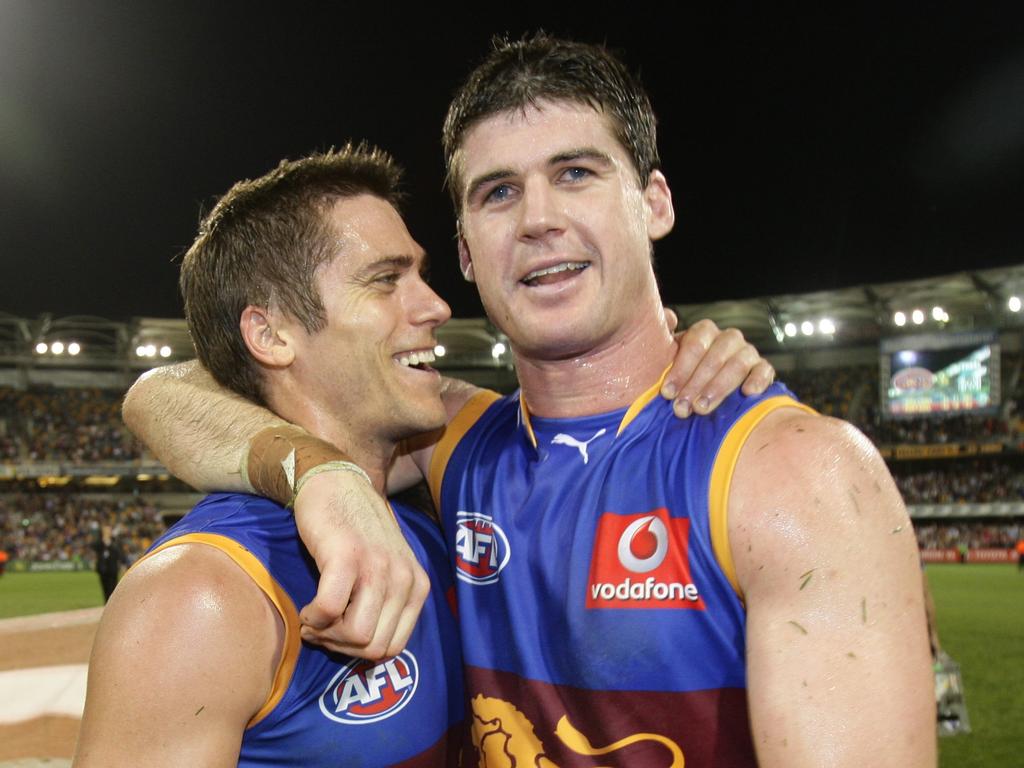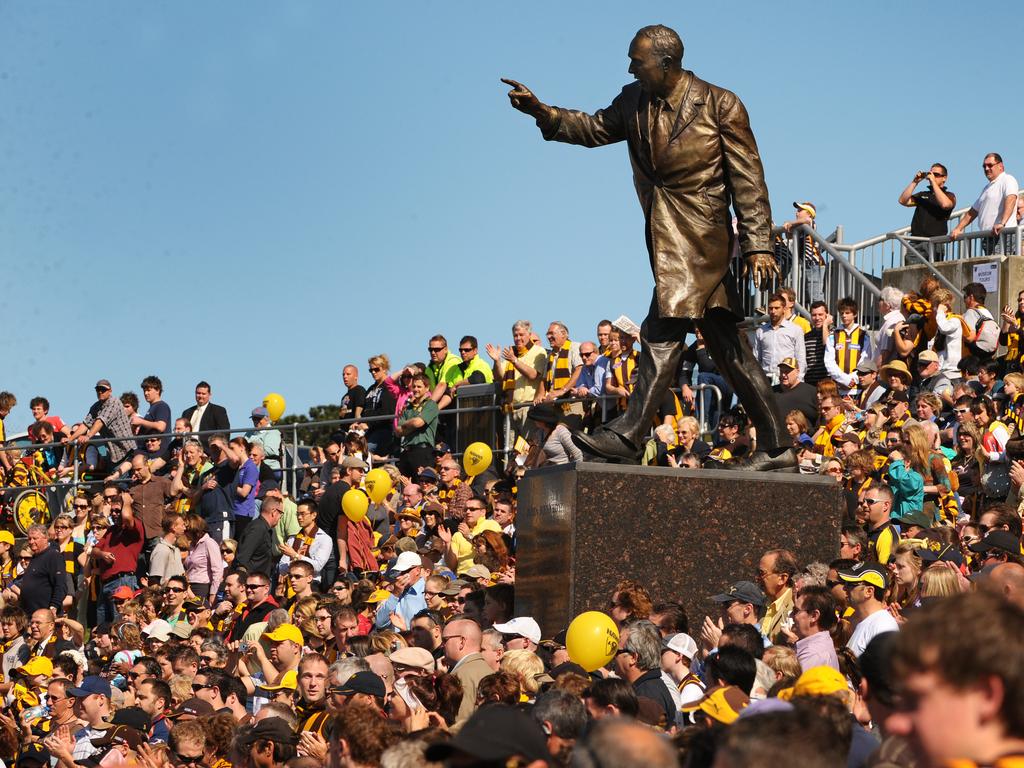The issue with the Australian Football Hall of Fame is who’s not in it

The answer is unequivocally “yes”. John Abley, Simon Black, Jonathan Brown, Dean Cox, Lenny Hayes and Greg Phillips all sit comfortably in the hallowed hall.
That’s not the issue. The problem with the Hall of Fame is who’s not in it.
If Lenny Hayes is in, then why not dozens of other midfielders, mostly from a time when they were called ruck-rovers, followers or centremen.
Michael Taylor, for instance, who dominated the pivot in 267 games for Norwood — winning six best and fairests and two premierships — and played 92 games for Collingwood after crossing the border late in his career.
Hall of Fame selection is an inexact science. Like democracy, it’s flawed. And like democracy, most of its flaws can be overlooked — but not all. The three principal problems with the Hall of Fame are its Victorian bias, its bias towards more recent events, and the conflation of the AFL/VFL with the game itself.
The Victorian bias is exposed in one stark example: the case of the champion full-forwards.
John Coleman played 98 games and kicked 537 goals for Essendon. Ken Farmer played 224 games and kicked 1414 goals for North Adelaide.
Coleman has been anointed one of 29 Australian football “Legends”. Farmer has not.
His record illustrates the gravity of this slight. Farmer booted 100 goals in 11 consecutive seasons from 1930-40. He was held goalless only once in his career — when he was carried off injured 10 minutes into the game.
Yeah, yeah, some Victorians say, but he never tested himself against the best. The same charges were levelled at Barrie Robran when he was made a Legend in 2001.
But it’s not the VFL Hall of Fame. Or the AFL Hall of Fame. Such thinking emboldens those who accuse the AFL of proffering only platitudes when it spruiks Australian football as the national game.
The “outer states” have, from the beginning, punched above their weight: Norwood beat South Melbourne in three out of three games to be crowned champions of Australia in 1888. The cause of non-Victorians has been aided by them crossing to Melbourne. Malcolm Blight wouldn’t be a Legend had he not played for North Melbourne.
Few South Australians would say Blight was a better player than Russell Ebert, who went to the Kangaroos too late in his career. Ebert is yet to be elevated to Legend status.
Others who clearly didn’t spend enough time in Victoria include Brent Crosswell, Robert Wiley and Gary Buckenara.
Wiley and Buckenara are in good company. WA players yet to be inducted include John Gerovich, George Owens, Ross Hutchinson, Tom Outridge, Derek Chadwick, Keith Slater, Ray Schofield and Mal Atwell.
Don’t fret if you haven’t heard these names because most are from eras past.
Which brings us to the bias of time. Of the six players inducted this week, five are from the past 30 years. Four have retired in the past 10 years.
So it’s hard to censure people who erroneously call it the AFL Hall of Fame, because if it walks like a duck …
The dominance of AFL-era players is not because all the worthy past champions are already inducted. They’re not.
Tom Leahy leads the first ruck in North Adelaide’s team of the 20th century. To gauge the quality of the side, Darren Jarman is warming the bench.
Leahy isn’t in the Hall of Fame and might never be. He played before the First World War.
Some say there’s no way of comparing eras. But take that argument to its logical extreme. If Cricket Australia was starting its hall of fame from tomorrow, would it not include Don Bradman because no one saw him play?
There’s ample testimony via newspaper reports and social history to inform decisions about players from long ago.
The hall’s absence of past stars has led Richmond historian Rhett Bartlett to brand it the “Television Era Hall of Fame”.
“If your career was pre-World War II your induction chances are slim,” Bartlett says. “Pre-World War I … zero chance.”
Every new inductee spawns a fresh argument. If Port’s champion fullback John Abley is in, why not Ian McKay, who kept Coleman to a solitary goal when South Australia beat Victoria in 1951?
In four state matches from 1949-51, McKay kept the great Coleman to a total of 10.4.
Yet Coleman’s a Legend and McKay’s still waiting to sup and feast with his fellow champions in a hall that, if its flaws remain, is more dusty antechamber than the football Valhalla of the AFL’s dreams.







Cast your eye over this week’s additions to the Australian Football Hall of Fame and ask yourself: are they worthy of the honour?